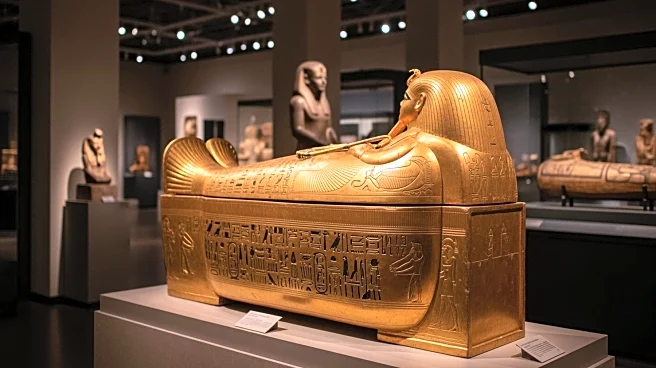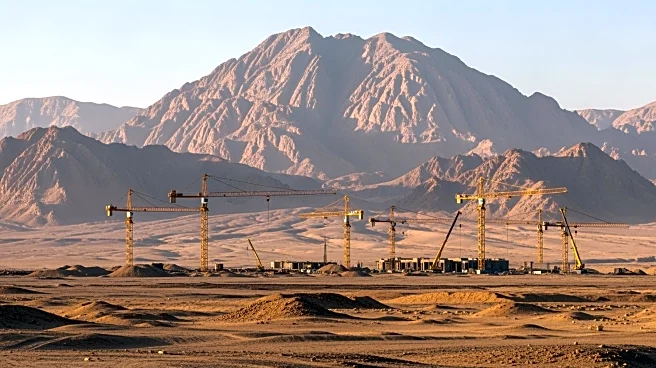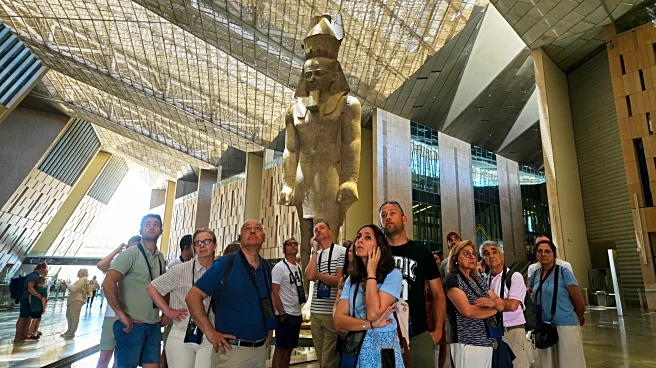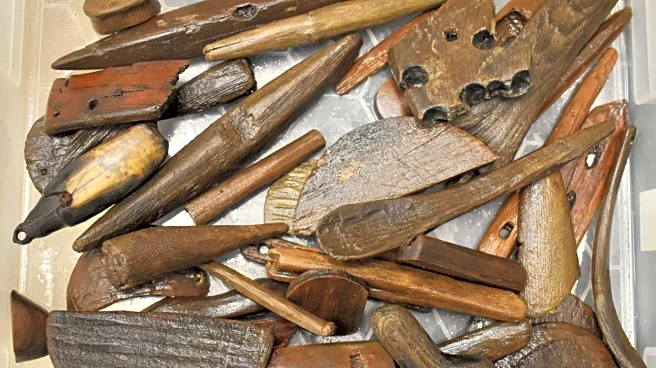What's Happening?
The Grand Egyptian Museum (GEM), located just outside Cairo, is set to officially open its doors this weekend, showcasing a vast collection of over 50,000 artifacts from ancient Egyptian history. Among
the highlights are treasures from King Tutankhamun's tomb, which have been kept from public view until now. The museum, which partially opened in October 2024, is the largest archaeological museum in the world dedicated to a single civilization. The Tutankhamun galleries, a centerpiece of the museum, reunite all 5,398 objects discovered in the young pharaoh's tomb by archaeologist Howard Carter in 1922. These include iconic items such as Tutankhamun's death mask and gilded coffin, as well as lesser-known artifacts that provide new insights into his life and reign.
Why It's Important?
The opening of the Grand Egyptian Museum is a significant cultural event, offering a comprehensive view of ancient Egyptian civilization and its contributions to world history. The museum's extensive collection, including the newly revealed King Tut treasures, is expected to attract scholars, historians, and tourists from around the globe, boosting Egypt's tourism industry. The exhibition of these artifacts not only enhances understanding of ancient Egyptian culture but also underscores the importance of preserving and studying historical artifacts. The museum's focus on digital experiences and new archaeological discoveries further positions it as a leading institution for education and research in Egyptology.
What's Next?
As the Grand Egyptian Museum opens to the public, it is anticipated to become a major tourist attraction, drawing visitors from around the world. The museum's management may continue to unveil additional artifacts and exhibits, further enriching the visitor experience. The focus on digital experiences suggests potential collaborations with technology companies to enhance interactive displays. Additionally, the museum's opening could inspire similar projects in other countries, promoting the preservation and exhibition of cultural heritage globally.
Beyond the Headlines
The unveiling of King Tut's treasures at the Grand Egyptian Museum highlights the ongoing importance of archaeological research and the role of museums in cultural preservation. The museum's efforts to piece together and display previously unseen artifacts reflect broader trends in archaeology, where technology and international collaboration are increasingly used to uncover and interpret historical data. This development also raises questions about the ethical considerations of artifact ownership and the responsibilities of museums in representing diverse cultural narratives.













